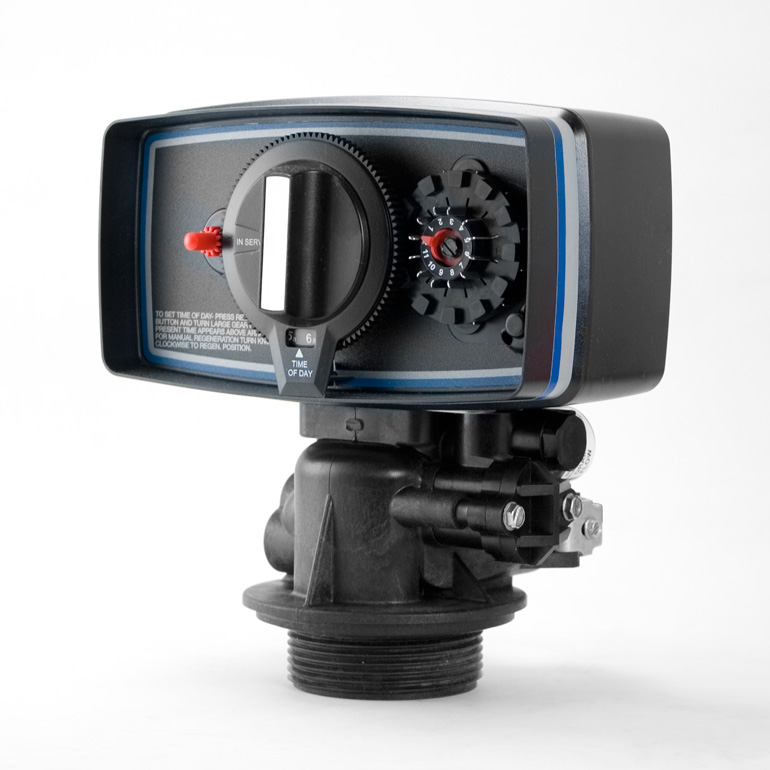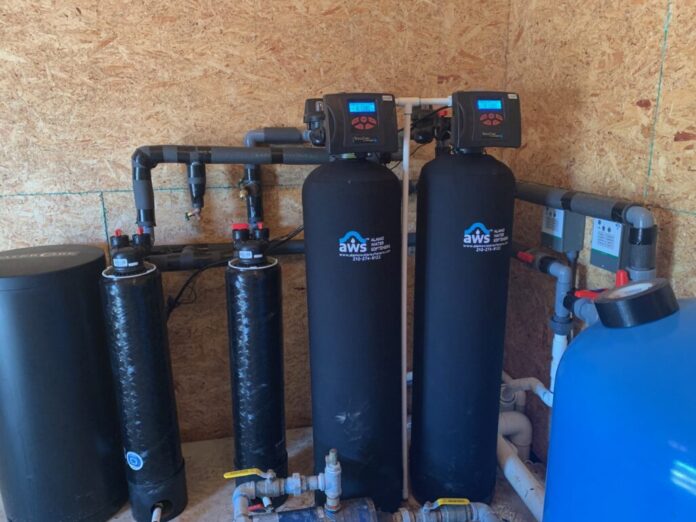[ad_1]
Water softeners are highly effective at eliminating mineral hardness and scale buildup, but only when they’re operating correctly. Have you ever wondered if your water softener is often regenerating or not frequently enough? Many homeowners who have installed a water softener often ask, should my water softener regenerate every night?
Most water softeners regenerate based on need rather than on a schedule. The water softener regenerates when the control valve tells it to start the regeneration process. If you’re wondering how often should my water softener regenerate? Then, the article will guide you on the regeneration process and factors affecting the frequency of regeneration.
What is a Water Softener Regeneration?
Water softeners work by a process called ion exchange. In this process, magnesium and calcium ions are attracted to the resin beads within the resin bed, while sodium ions are released in exchange for these hard minerals removed from the hard water. The resin beads can only contain a finite amount of sodium ions.

When nearly all the sodium ions within the resin bed have been exhausted, the media bed is then saturated with calcium and magnesium, leading to water softener regeneration. When a water softener regenerates, calcium and magnesium ions are released from the resin bed by saturating the bed with sodium ions, reversing the exchange process.
The resin bed is replenished with salt from the brine tank, and the system is ready to remove water hardness again. Most water softeners can be scheduled to regenerate where there’s a low demand for soft water, such as in the middle of the night. When most residential water softeners regenerate, they allow untreated water to bypass the unit.
How Does a Water Softener Regenerate?

Once you have hooked up your water softener, the water regeneration process about 85 to 90 minutes and involves the following steps:
- In the regeneration cycle, which takes about 10 minutes, the water reverses its flow to clean the tank.
- Next, the salt brine solution flushes out unwanted hardness minerals, which takes 50 60 minutes.
- The salt brine and unwanted minerals are then sent down the drain, which takes another 10 to 15 minutes.
- Lastly, the water refills the tank to make more brine for the next service cycle, taking ten minutes.
How Often Should a Water Softener Regenerate?
There is no clear timeline for water softener regeneration. However, your water softener must regenerate regularly. While some water softener regenerates daily, others may regenerate once or a few time a week. The frequency of regeneration depends on several factors that include the hardness of your water, the amount of water used, and the size of your resin beads. Those several factors include:
Water Hardness
The hardness of water is the most determining factor in how often your water softener will require regeneration. The more calcium and magnesium that your water contains, the greater the ion exchange rate. That said, more salt is required during the regeneration process, and the resin bed may require replenishing more regularly.
Sometimes, your system may need to regenerate daily if you have unusually high water hardness and the unit isn’t sized correctly. This will help maintain a constant supply of soft water for your household.
Household Water Usage
Your family’s water usage habits also dictate how often your water softener needs to be regenerated. If there are only a few people in your home using less water, your system may only require regeneration once every two weeks or so. Larger families using more water on a daily basis will need to regenerate their systems more frequently, possibly as often as once a week, to maintain a consistent supply of softened water.
Because the system is treating more hard water per day, the resin beads will become saturated at a faster rate, and more frequent water softener regeneration will be required.
Resin Tank Capacity
The size of your resin tank also plays a role in how often you need to regenerate your water softener. A larger system will have more capacity to treat hard water and will require less frequent regeneration than a smaller unit.
A larger tank will hold more resin beads which can hold a higher volume of sodium. More space for sodium also means more space to hold calcium and magnesium ions when they’ve been removed from the water. The resin will take longer to become exhausted, providing effective water treatment over a longer period of time.
You can further control how much salt is used by altering the pounds of salt setting. These salt settings will generally need to increase as single tank water softeners because of the damage done to the resin structure. Changing these settings should be done by a professional water treatment company. They’ll ensure that you’re provided with a properly sized, applied, and installed system.
Resin Deterioration
Over time, the resin beads will slowly become coated with calcium and magnesium particles. This process is called regeneration, and it’s necessary to keep the resin working properly. During regeneration, saltwater is used to rinse away the built-up minerals. The amount of time between regenerations will depend on the hardness level in your water, the amount of water you use, and the settings on your water softener.
Over years of salt and water usage, the resin’s structure starts to deteriorate, and it may be unable to retain the same volume of minerals. The system may have to regenerate more often to provide softened water as there will be fewer available sodium ions available for exchange.
Most water softening resins will last for upwards of 8 years. Some can even last for longer than 15 years. If you’re looking for a high-quality resin that will result in optimal regeneration, invest in the best water softener shower head to suit your needs.
Clogged Brine Line
The brine tank in your water softener needs to be working properly for the system to regenerate properly. If the brine line becomes clogged, then it may not be able to draw water into the tank for regeneration. If your tank fails to empty or fill properly, the entire water softening process will be affected.
For ion exchange to take place, salt must be dissolved in water, producing a sodium-rich substance called brine. The brine is sent into the softening tank, where it regenerates the resin beads. If a blockage in the brine line prevents water from entering or leaving the tank, the system will not be able to regenerate and continue softening your water.
You can try to clear a clogged brine line on your own by using a plunger or a snake. If these methods do not work, you will need to call a plumber to clear the line for you. You can also clear the blockage by flushing the system.
Chemical Deterioration
Chemical deterioration caused by chlorine from the municipal water supply will also decrease the efficiency of your water softener. Over time, the resin beads will break down and will no longer be able to effectively remove minerals from your water. If you notice that your water is not as soft as it used to be, you may need to replace the resin beads in your water softener.
System Age
How often will your water softener regenerate when it gets old? It will regenerate more frequently, maybe every day rather than two to three days. If you have a single tank electric water softener, then you’ll experience this problem.
No matter how efficient your water softener was at the beginning, it will need to regenerate more often as it gets older. As the resin beads degrade, they will become less effective at removing minerals from your water. This is why it’s important to regularly check and maintain your water softener.
Iron Levels
Iron is a contaminant that can be damaging when left in water. However, most water softeners are capable of removing low to medium levels of this mineral. Iron is treated like magnesium and calcium minerals, as it’s exchanged for sodium in the softening tank.
If your iron levels are high, your water softener may not be capable of removing all of it. In this case, you’ll need to install an iron filter to remove the excess iron from your water.
The Control Valve
The last determining factor is the control valve that your softener has. If your water softener has a valve with a built in clock, then it follows a specific schedule and regenerates according to a pre-set timer. Metered softeners are a little different. They regenerate based on how much water has been used.

This can be useful if your level of water usage is sporadic, such as if you’re in your house for several days before working away from home for several days. Check your user manual if you’re unsure what menu settings your softener’s control valve uses.
FAQs on How Often a Water Softener Should Regenerate
How often does a water softener recharge?
The frequency of recharge cycles for a water softener varies based on the type and model of the unit. The average is every 7-10 days for standard units and 2-3 times per week for high efficiency models.
How often should a water softener regenerate?
The regeneration should occur after every 12 to 14 days, or it should occur after predetermined gallons of water that you use.
How to tell if water softening is regenerating?
Noise like running water and a motor hum are signs that you have a water softener regenerating. These sounds indicate that the brine solution is washing over the water softener’s resin.
Final Thought on How Often You Should Regenerate Water Softener
Understanding your water system’s settings is important because if the water softener isn’t regenerating, you may not have soft water. If it’s regenerating too often, it might be using too much salt. Check your manual for the specific settings for your model. If possible, get help from a professional to ensure you’re benefiting from soft water 24 hours a day.
The post How Often Does a Water Softener Regenerate appeared first on Kitchen Infinity.
[ad_2]
kitcheninfinity.com










